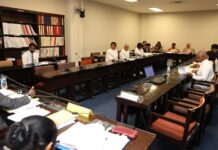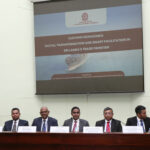Despite global negativity, the CSE has emerged the best performing stock market in the world as of January 19, 2021 due to local positivity. Analysts expect global equity market growth to move away from the US to favour the rest of the world. The capital flow into Emerging Markets can also be expected to flow into Frontier Markets while SL has the potential to outperform other frontier equity markets during 2021 since it is trading at attractive valuations, as per the latest Economic & Market Outlook report of the Colombo-based Ceylon Asset Management (CAM).
Sri Lanka offers the highest negative correlation in Asia compared to India, United States and Japan while Malaysia is the 2nd highest in Asia compared to the same countries. It reveals that the CSE’s negative correlation to US, India and Japan stock markets during the past 5 years offer investment opportunities to global investors.
Frontier economies such as Sri Lanka are experiencing credit distress reflected by a series of country rating downgrades by the international rating agencies. As a result, Sri Lanka International Sovereign Bond (SLISB) yields spiked to an all-time high level in last year since the first issue during 2007. The 2030 SLISB yield of 9.1% before the pandemic (11 March) increased to 19.6% during May 2020. Currently, it has recovered marginally and trading at a yield of 15.5%. The 2030 ISB price declined by -37.8% during 2020. The 2022 ISB maturities still trade at yields above 30% reflecting global investor concerns over Sri Lanka’s ability to repay maturities next year given insufficient Reserves.
Despite the adverse economic environment, the research report published by Ceylon Asset Management (CAM) highlights a contrarian investment Opportunity in the Sri Lanka International Sovereign Bond Market. However, Global negativity towards SL is strong due to existing external debt obligations, weak debt sustainability, insufficient foreign reserves and hesitance to engage with the International Monetary Fund. As a result, all other ‘CCC’ rated countries trade below 10% while Sri Lanka trades at 18.5% p.a.
The foreign analysts are negative on the external debt repayment ability of Government of Sri Lanka over the next five years due to mounting adverse economic conditions. The absence of a credible debt repayment strategy by the Government of Sri Lanka has diluted foreign investor confidence despite the statements provided on the willingness and ability to settle the upcoming debt obligations.
Despite the negative impact of the pandemic on Sri Lanka and exit of foreign investors from the CSE, analysts observe a contrarian behavior of local investors due to their confidence in the government policies and measures to reduce the trade deficit, a strengthening current account balance, arrangements of dollar SWAPs of USD 2.5Bn to strengthen FX reserves to overcome prevailing challenges. In addition to the dollar SWAPS, The Government of Sri Lanka expects committed FDIs of USD 2.5Bn during 2021.
Ceylon Asset Management Research understands the strategy and plan of the Government and Central Bank of Sri Lanka for 2021 as follows:
- Sri Lanka is confident of reporting a GDP growth of 5% in 2021. The Agricultural Sector to perform along with exports such as apparel, tea, and sea food.
- Export earnings have almost returned to pre- pandemic levels of USD 1Bn a month.
- Restrictions on imports and tax concessions on several sectors are expected to boost domestic economic growth.
The Central Bank of Sri Lanka expects to reach a fiscal deficit of 8.9% in 2021 along with high deficits expected from other nations around the world. This report outlines the decisions made to reduce the debt burden of the country as follows:
- Converting the State-Owned Enterprises (SOEs) to profit-making entities, and possibly listing them, while maintaining their SOE status. This suggests that privatization, which was part of the International Monetary Fund programme, is not on the table for now.
- A strategy to not obtain loans for any future project and proceed as Public Private Partnership (PPP), Build- Operate-Transfer (BOT) or Build-Own-Operate-Transfer (BOOT).
Increasing Multilateral and Stock Market Investments:
- One of the largest general insurance companies – the Fairfax based in Canada is excited about Sri Lanka and its long-term prospects. Accordingly, they have been expanding their investments in the CSE to reap benefits in the near
- The Agency France Development (AFD) is set to expand the non-sovereign debt portfolio worth of Euro 400Mn over the next 3 years to the Public and Private sectors of Sri Lanka.
This report outlines the key risk factors for SL in 2021 as follows:
- Failure to materialize the FDIs will add pressure on the rupee exchange rate while managing the budget deficit is important to mitigate the pressure on interest rates and inflation.
- If global pandemic risks are not overcome, tourism revenue in 2022 will fail to materialize.
- Upcoming UNHCR session in March 2021 will target Sri Lanka on war crimes and Covid 19 burials and possibly damage the image and impact trade, investments and tourism. However, future risk can be mitigated by SL cultivating a cooperative relationship with India on a new economic path.
Research wing of CAM, led by its senior Economic Advisor Rainer Michael Preiss says, Investors to include equity in portfolios during 2021 before PE ratio exceeds 15X and a country rating revision.
They further believe Global investors should exploit this unique contrarian profit opportunity on SL International Sovereign Bonds due to deeply discounted prices (30 %+) and diversify risk exposure to reap benefits in the near future.












